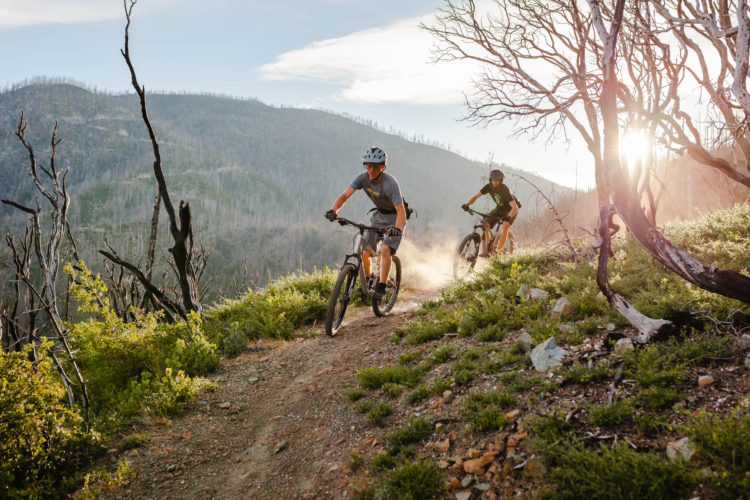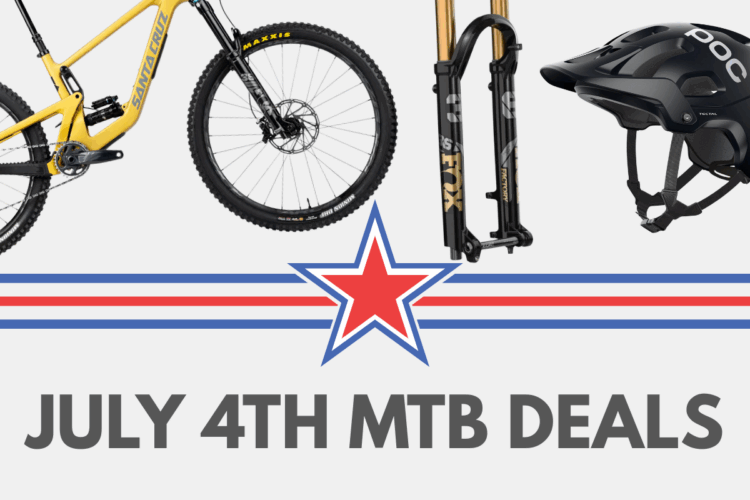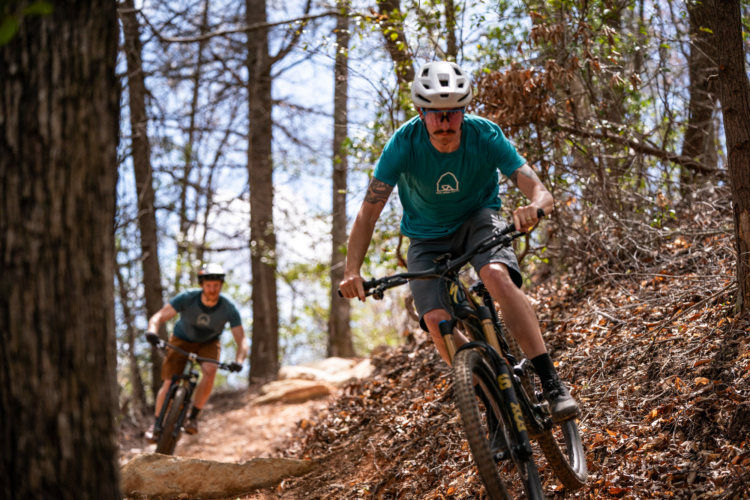I’ve had two sets of rims from the Chinese company Light Bicycle (LB) over the last two years, and I’ve broken them twice. That’s only made me like them more… I’ll get back to that later.

This review is of their 38mm (31.6 mm internal) wide 29er rim, which I’ve been on for the whole season, but I’m also running a set of their older 23mm internal rims, now on my singlespeed, and those have seen almost 3,000 miles. I purchased both sets as rim-only and had my local bike shop build them up–the “wides” on Hope Evo pro 2, and the older rims on Chris Kings, both 32 hole. The hubs have been flawless in both cases.
The wide rims came in as advertised at 450 grams each, and built up with the Hopes, tape, and stems, the pair came in at 1780 grams. Not light, but solid, and under $1,000 total.

There has been endless banter on the interwebs about the performance and quality of the Chinese rims. Some would point to the “knock-off” nature of their offering. I agree that if you want top-quality rims made in the USA, go with ENVE or Industry 9. Even in the generic Chinese rim market there seem to be a number of players now. After a few friends ran the Light Bicycle rims with great success, I sprung for a set for my old Yeti SB95, and those rims have stayed with me for three bikes. When I moved those to my singlespeed I opted for the new wide offering for my Ibis Ripley. They measure 31.6mm internal, which puts them between the Roval carbon at 30mm, and the Ibis rims at 35mm.
LB rims are made to order and take a few weeks to arrive at your door. Total cost was $430, delivered, for the pair of rims. While they will do a full wheel build, with lots of options, I decided to let my LBS do the build so I had some local support. Both sets built up with no issues and the mechanics, who started as skeptics, were generally impressed with the quality.
The new wide offering have a modern zero bead hook design, and were easy to set up tubeless. I have run Specialized Ground Control grid tires, Continental Mountain Kings, and Schwalbe Nobby Nics. All of them require a bit of muscle and at least one lever to get on, but seated with just a floor pump. While I didn’t measure them, each tire appeared much larger than on a narrower rim. The 2.3 Ground Control barely works in the narrow rear end of the Ripley.
Like most of the new wide rims, I have been able to run a few PSI less pressure than I used to: 22 front and 23 rear is perfect for my 185lb weight. The increase in grip and smooth ride is as you’d expect from a wide rim. The extra width made these wheels noticeably stiffer than the narrower offering, and stiffer than most aluminum rims I’ve run. They gave me an immediately-noticeable confidence boost on my first ride out, and I smashed my best time down a technical descent.
When you are able to drop pressures down around the 20psi mark, each PSI matters… a lot. On two occasions I set out on a ride thinking “huh, my back tire feels a bit low… oh well!” and on two occasions a high speed landing on a sharp rock brought an end to my fun. Cracking a carbon rim is immediately apparent, with a sharp “crack” and a hissing of air. But in neither case was it catastrophic, or even ride-ending. In both cases I put the blame squarely on myself, and on rear pressures likely in the teens.
Both impacts resulted in a lateral and vertical crack in the sidewall that leaked air, but never failed. I was able to put in a tube and ride on.


When I broke the newer wide rim, it was during a quick stop in Tahoe on my way to ride in Sun Valley. I came up short on a small gap near Northstar and “crack.” On day one of a trip, and with no prospect for an easy replacement, this was a huge bummer. While maybe not recommended, I smeared some 2-ton epoxy in the cracks and rode another 200+ miles on the rim, using a tube. The cracks never spread, and I didn’t ride any differently. Other experiences may vary, but I was impressed enough each time to order the $180 crash replacement rim and get the wheels back in action.
These will continue to be my primary wheelsets for both my personal bikes, and I’ve been pretty happy with them. Throwing $1,000 at an unknown and somewhat-maligned product is a risk, but one that’s worked out pretty well… sort of.

Pros
- At about $500 less than the Ibis or Roval wheels, they’re a bargain.
- The weight is competitive with the Ibis wheels, and could be lighter with different hubs
- They held up to all types of riding, but couldn’t match my stupidity.
- When they failed, it wasn’t as bad as you might imagine.
Cons
- There are some aluminum wheelsets available less money and a similar weight.
- You have to live with being the rider that bought the “cheap Chinese rims.”
- Maybe a different set of rims wouldn’t have cracked, who knows?
Your Turn: Have you ever tried knock off Chinese rims? Tell us about your experience in the comments section below!
[see_also id=”181128″][/see_also]
Andrew Galbraith resides in San Anselmo in Marin County, CA. A board member for Access4Bikes, Andrew has the best trails in Marin easily accessible from his back door.





















13 Comments
Nov 12, 2015
-Carbon wheels can be very light, and very tough. This particular set isn't (but they're really wide), but I routinely build light carbon wheels. Yes, there are alloy wheels in similar weight ranges, but they're nowhere near as stiff and solid as carbon. I have a set of White Industries & Nox Composites 650B wheels I just laced up that weigh under 1400g!
-Light-Bicycle's quality is generally pretty good. I'm not a dealer of theirs (they don't have any dealer network or anything), but I have built quite a few of them.
-"Generally" is the key word there. They do seem to have more failures than other Asian made rims from US companies (such as Derby and Nox), but that is something that is really hard to gauge based on what you see on the web. I have one friend who broke one from a rock flipping up and hitting the top of the rim between a pair of spoke nipples. They're cheap though, and everyone has to weigh the pros/cons. The author of this review likes them so much he bought new ones when they broke, both times. But - they broke, twice. Many riders wouldn't tolerate that. As soon as you have to buy a replacement, you have a long wait getting the replacement rim, and you have to spend more money to have it rebuilt - at that point you're no longer saving any money, and it's a big inconvenience. You can't say for sure if another rim would have broken or not...everything breaks if you hit it hard enough.
When it comes to carbon rims there's basically three price-points - ENVE at the top with US-made rims ($2500 and up), 'cheap chinese' at the bottom (~$1000), and Asian-made, but US-based companies in the middle (like Derby and Nox) - and they are in the $1300-$1800 price range depending on the exact build. So they're closer to the cheap Chinese rims than the ENVEs.
For most riders, ENVE is out of the question. No matter how good they are, they're just too expensive. Deciding between 'cheap chinese' and US-based companies, mainly you just have to decide if the support, faster turn around, easier communication, etc from a US-based company is worth the extra money vs buying directly from the manufacturer. For a lot of people it is, for some it's not.
Nov 12, 2015
Nov 12, 2015
Nov 10, 2015
+1 though for wide rims!
Nov 12, 2015
I put 2.3 DHRII EXO MaxxTerra Rear / DHF EXO MaxxTerra Front on them and they are about the same weight as my previous WTB i23 rims with much lighter tires on them (schwalbe nobby nics, 2.35F / 2.25R).
The main thing I noticed is the insane traction running the Minions tubeless at 20psi F / 22psi R, unbelievable confidence no matter the terrain (wet leaves, rocks, roots) etc.
I would buy them again!
Oct 6, 2016
Backcountry initially offered to help me out but then they told me the crash replacement was $500 and no warranty after having me email the pictures to them 3 separate times.
I contacted Easton directly as was suggested by a bike guy at one of my races. They said that Backcountry.com never submitted the warranty and to try through my LBS. Again I took photos of the two small cracks and sent them through my LBS to Easton. They said the pics would not determine and I had to send the wheels back for final decision. The bike shop said the rebuild was $300 if no warranty + shipping.
Backcountry.com contacted me as a follow-up to see how their service was. I told them I contacted Easton directly etc etc. and they were mad as bees at me. I think they accused me of lieing at one point....
Moral of the story, there is no warranty on Carbon rims. They will crack regardless of brand. Crash replacement is still very expensive, and unless you are some sort of sponsored, you are throwing away your money. My Havens were nearly as light and twice as durable as my carbon ec 70s. Don't do it.
Oct 18, 2017
Aug 11, 2016
Nov 10, 2015
Tire weight is a bigger variable anyway. Depending on the durability or traction that's needed I could run a 675g 2.25 Nobby Nic, or I could run a 975g Minion. That's 600g total difference!
I will say that the stiffness is the big plus here. As far as durability I had a friend recently destroy his Roval Carbons on a stout root, so spending more may not help.
I look forward to seeing what the options are in the coming year.
Nov 12, 2015
In my humble opinion, it's like taking your Maserati to the local circle 8 race: Yes, you might be faster and look cooler than everyone else there, but it's just a matter of time before things turn sour.
As was stated previously, tires are a much more cost effective way to save a few hundred grams than pricey wheels. I often think the perceived benefit with high buck wheels has more to do with the better hubs than anything rim related.
Feb 24, 2016
here is website: http://www.tandellbikes.com/
Nov 13, 2015
I bought a set through 'Carbonal Wheels' 5 months ago to stiffen the rear end up. I was pounding the local trails on alloys and they were tending to flex and get a lot of loose spokes. Even after repeated trueing and tensioning.
The first crunch happened the other day. Im now going through the process of xrays to provide proof that the wheel wasnt miss used gaping something that was marginally longer than my bike, in order to get a replacement.
Will it keep happening.....
Jul 30, 2018